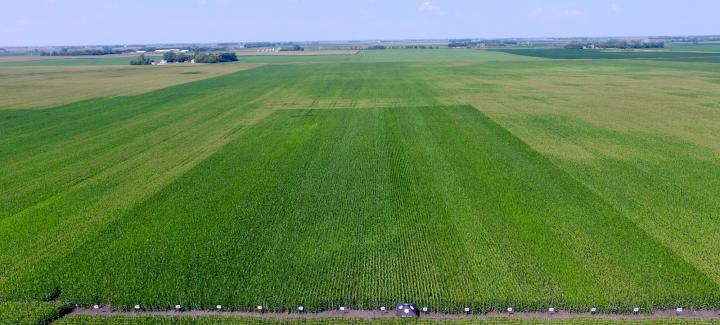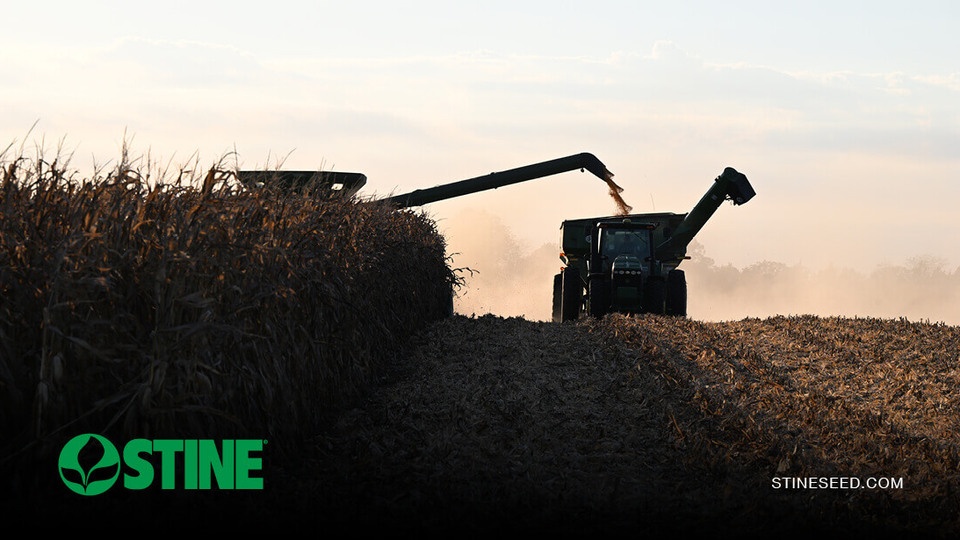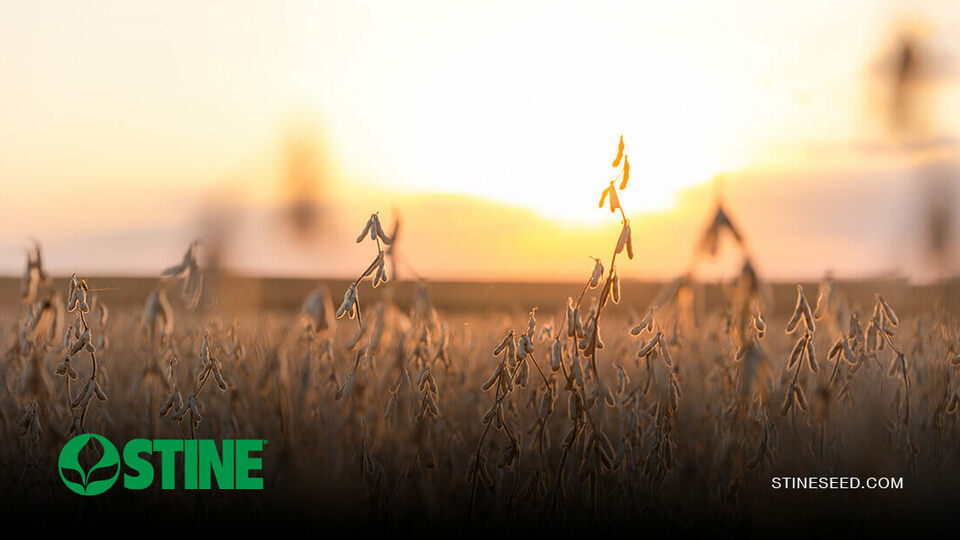
According to the July 24, 2023, USDA weekly crop progress report, 68% of corn is silking and 16% is at the dough stage. The weekly crop progress report also confirms that 70% of soybeans are blooming and 35% are setting pods. Soybean crop conditions are listed as 8% excellent, 46% good, 32% fair, 10% poor and 4% very poor. Corn crop conditions are listed as 11% excellent, 46% good, 30% fair, 9% poor and 4% very poor. Last week, we provided crop progress updates from Stine regional sales agronomists (RSAs) in South Dakota, Nebraska, Illinois, Arkansas, Louisiana and North Dakota. This week, RSAs in Iowa, Kansas, Missouri, Indiana and southern South Dakota provide reports from their territories.
Paul Galm, Region 3 (southern South Dakota)
Corn development is in the R1 to R2 stage throughout most of the region. Ear shake tests indicate excellent corn pollination. We welcomed cooler temps early on but are ending with 90+ degree weather moving in this week, which will test subsoil moisture levels. Some fungicide applications are being made; however, very low or minimal corn or soybean leaf diseases are present.
Soybean development is progressing nicely. We’re at the R2 to R3 stage in soybeans in most fields. Those who planted 15-inch rows are at full canopy; 30-inch rows are at 70% canopy. Enlist® applications are now complete with excellent weed control and nearly zero crop injury to report.
Most fields will be fine with the one-week forecast of hot temperatures. If we see a second hot week without significant rainfall, several fields in R3 will start showing heat and drought stress.
Dustin Ellis, Region 4 (north central and central Iowa)
In Region 4, we’re extremely dry in most of the territory. Even as dry as we are, the corn and soybeans look really promising. We could be one, maybe two rains away from a really good crop. Fortunately, we’re not seeing a lot of disease and insect pressure. We’ve dealt with a little tar spot that we’re keeping an eye on, but nothing that’s coming out and making a big issue in the territory. We’ve seen quite a bit of fungicide applied to corn in the last week to 10 days, so hopefully that will prevent any large spread of tar spot.
Stine MX709-20, MX710-G, 9817-30 and 9808E-20 brand corn products are standing out the most in our territory. The plants look great and are in good health. What we’re seeing right now for ears is great. These products also had really good emergence, which can be attributed to planting in dry conditions this spring. Plants weren’t mudded in and were able to access the nutrients and water they needed to produce a strong root structure. It also boils down to strong genetics. Stine genetics are developed to tolerate extreme conditions.
On the soybean side, Stine Enlist E3® soybeans are standing out. Growers are very pleased with the product and chemical program. They’re able to keep weeds down in most cases. And the overall health of Enlist E3 soybeans looks great. We did see some iron deficiency chlorosis up north on soybeans, but it was mostly manageable. Overall, we’re setting up for a really good year if Mother Nature stays happy.
Aaron Stockton, RSA Region 9 (eastern and southeastern Kansas, western Missouri)
We’re in the grips of a drought again this year. Decisions are being made to chop for silage or harvest. Dryland acres are suffering, while irrigated crops look really good. Early soybeans look decent. Most are setting pods right now. A rain would definitely help the process. Wheat harvest went really well. The double crop soybeans behind wheat have decent stands but need a drink as well. If we can catch rain, we have some hope for soybeans, but optimism is waning on the corn side. Stine 9752-32 looks good on the corn side. Early planted 9817-30 and 9818-32 look pretty good as well. A lot of customers are pleased with those three products, but we haven’t had the weather to help move them along. On the soybean side, Stine 48EE20 looks good, but everything is at a standstill until we get through this heat.
Luke Krueger, Region 16 (northern and central Indiana)
A moderate to severe drought covered most of northern Indiana to start the season. There was a concern for mid-season planting dates as corn and soybeans were taking up to 21 days to emerge in some instances. After some timely rains over the past month, a large amount of the corn is tasseled (or very close) and soybeans are beginning to put on some flowers. Optimism is growing for a successful crop barring any more adverse Mother Nature effects in the coming weeks.
Eric Webb, RSA Region 38 (northeast and north-central Kansas)
Things are looking good in northeast Kansas, considering the dry conditions we had early on from planting time. The northeast part of the state has caught timely rains, especially in July. Just in time to help with grain fill. Things look great in that part of the territory. Once you get a little farther west, they are extremely dry. Things are not up to par in the northwest and north-central portion of the state. Over the next five days, we expect 100+ degrees in that region, with no rain in the forecast. They need rain in a bad way. Some growers are starting to see burnt tips on the corn and stalks that are shorter and thin due to the drought. Most corn is also tasseled. Due to the extreme drought conditions, some soybean leaves are turning out. The current forecast will be the determining factor for the soybean situation in that territory. Corn is still manageable, but, in some cases, some are burnt pretty bad. Stine MX709 is doing really well in the drought. I’m impressed with how it has stood up to the current conditions. I have one grower who plants it in 15-inch rows, so it’s a little thicker and has canopied well.
If you have questions related to crop progress in any of our other regions or if you need agronomic advice, please don’t hesitate to reach out to your local Stine sales rep or RSA.
Related Articles
-

Soil sampling sets the stage for spring
November 2025 in Agronomy
-

Corn production growth paves way for more high-performing Stine® hybrids
November 2025 in Agronomy
-

Stine harvest roundup: Part 2
October 2025 in Agronomy
-

Stine harvest roundup: Part 1
October 2025 in Agronomy



